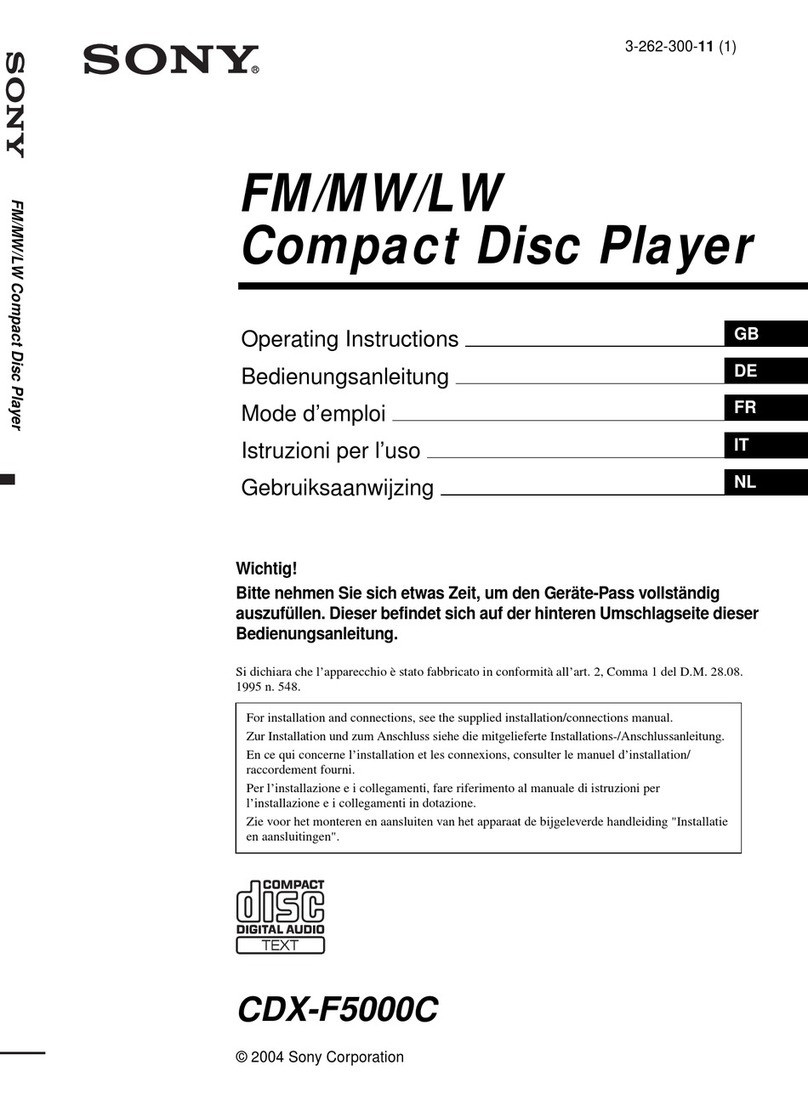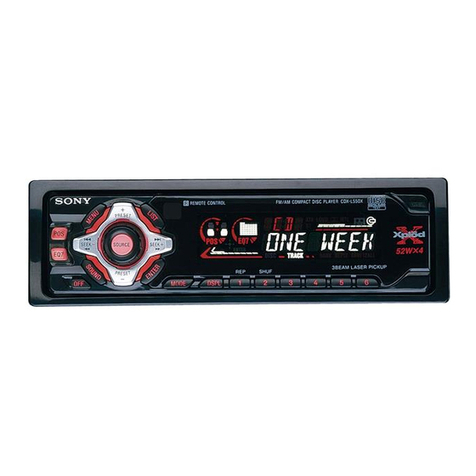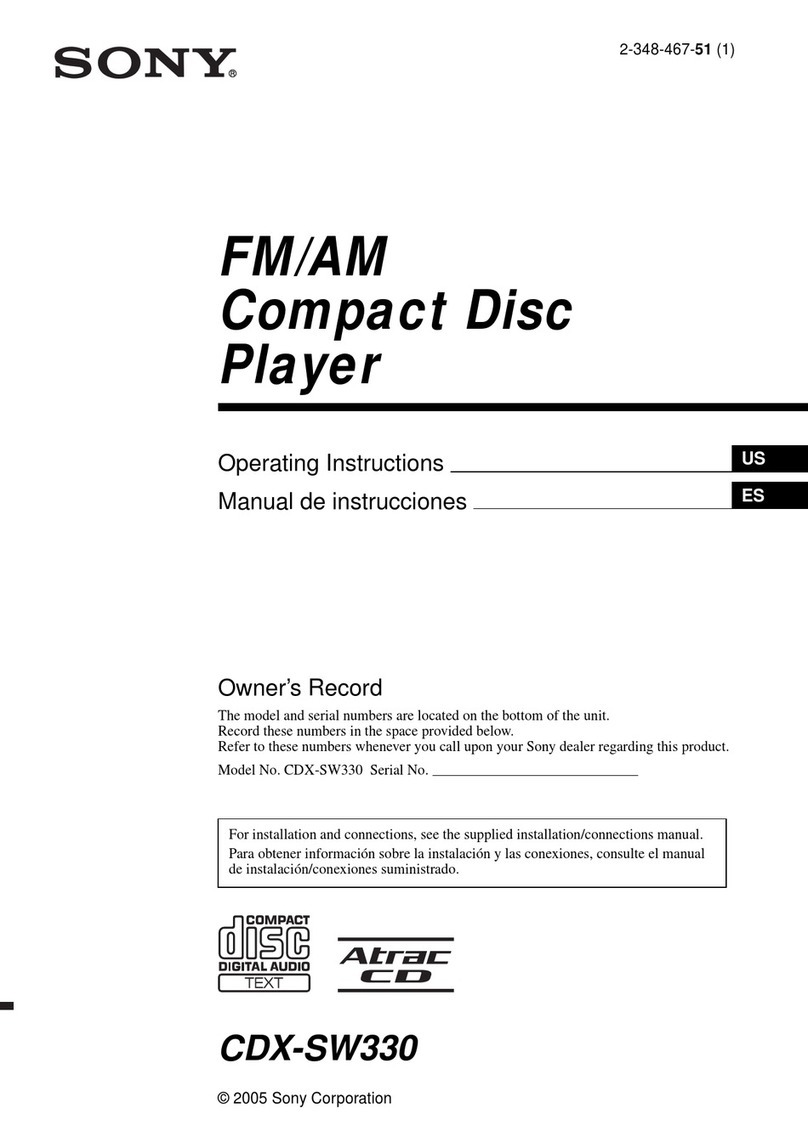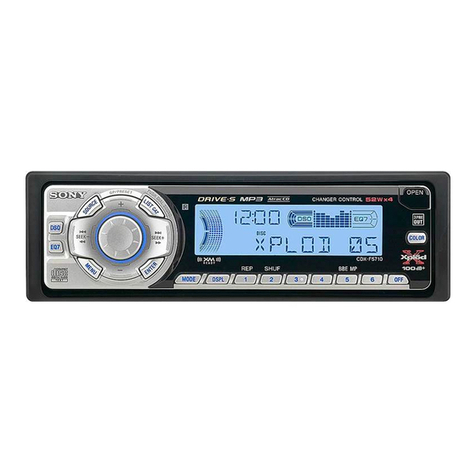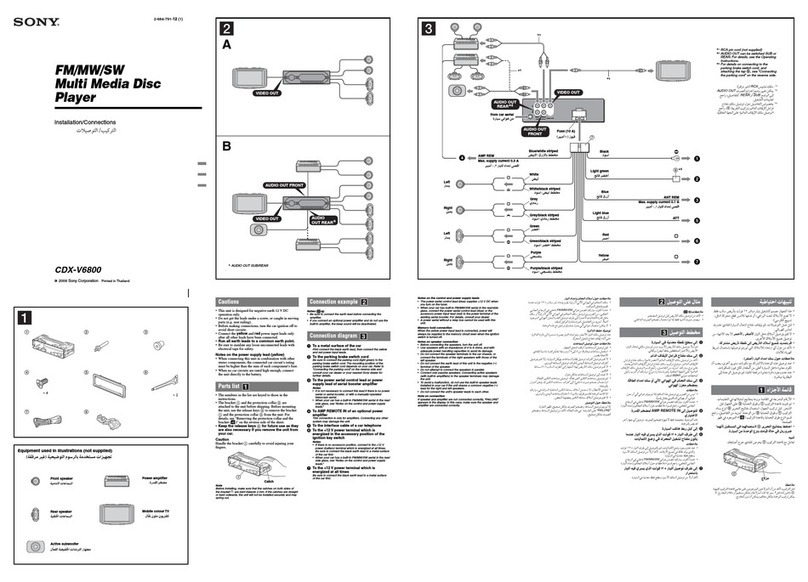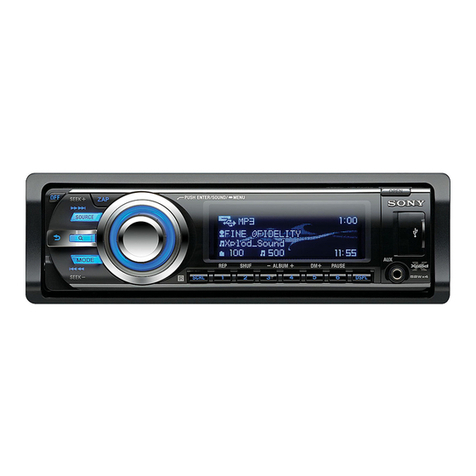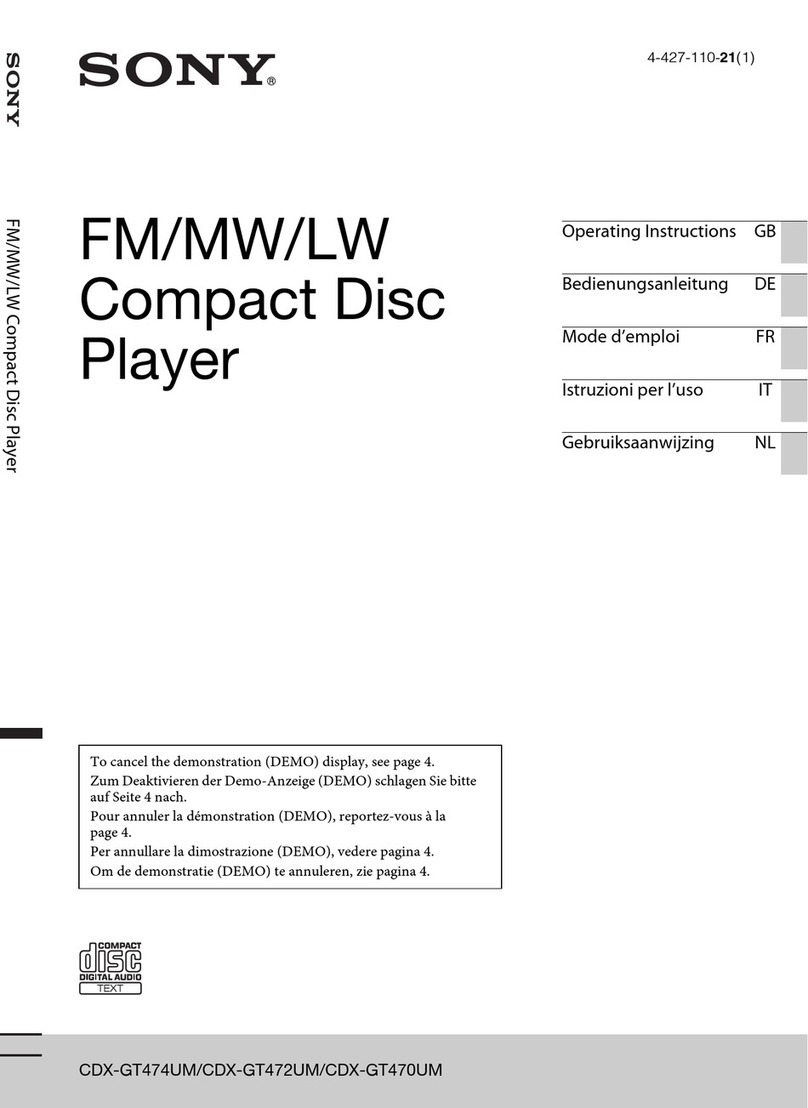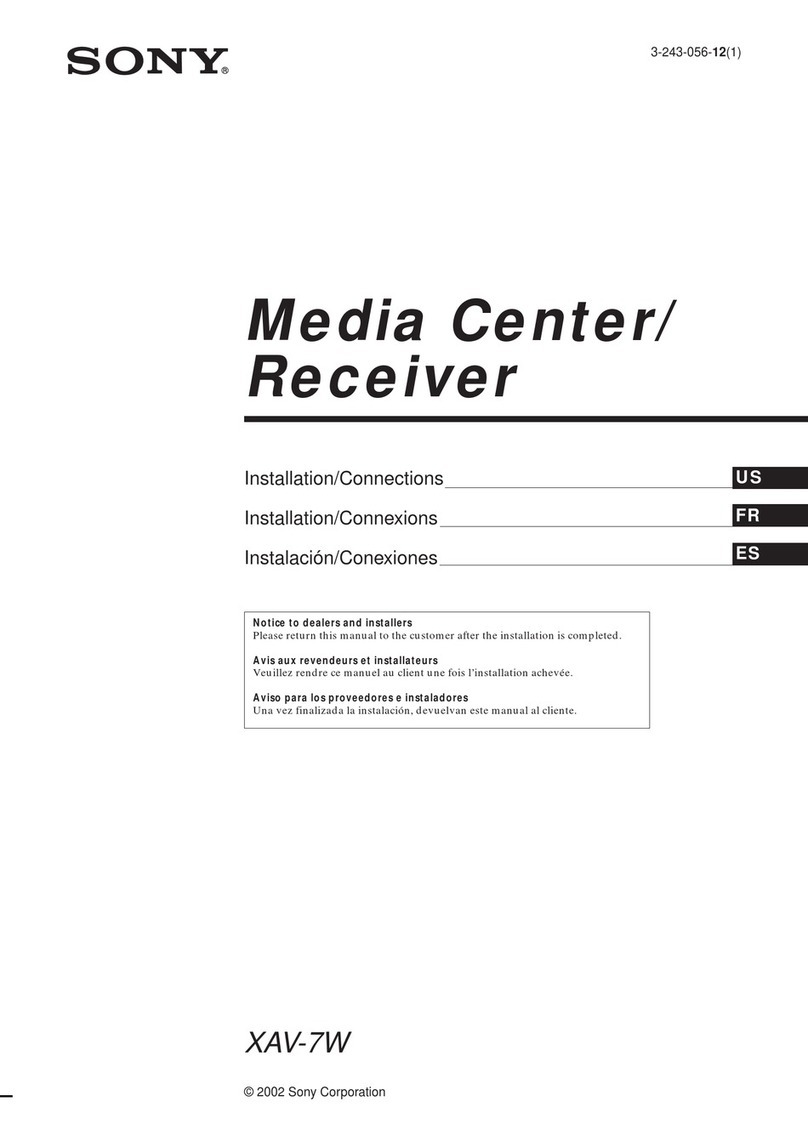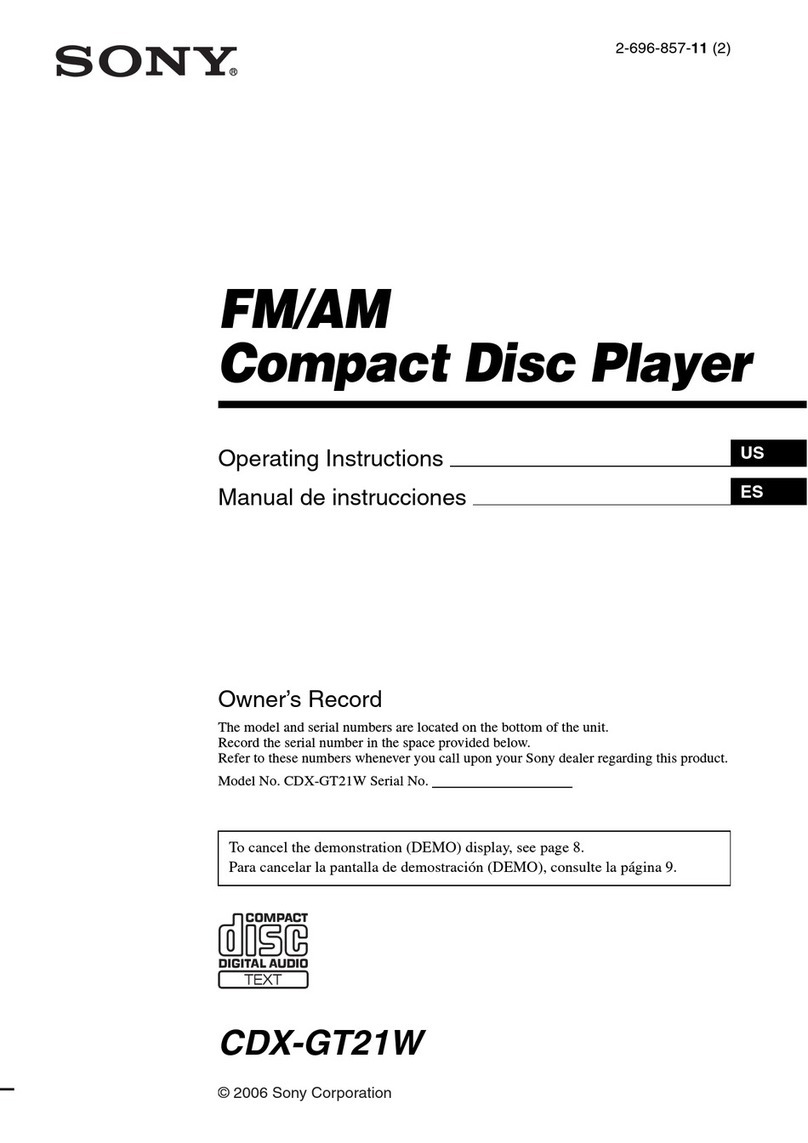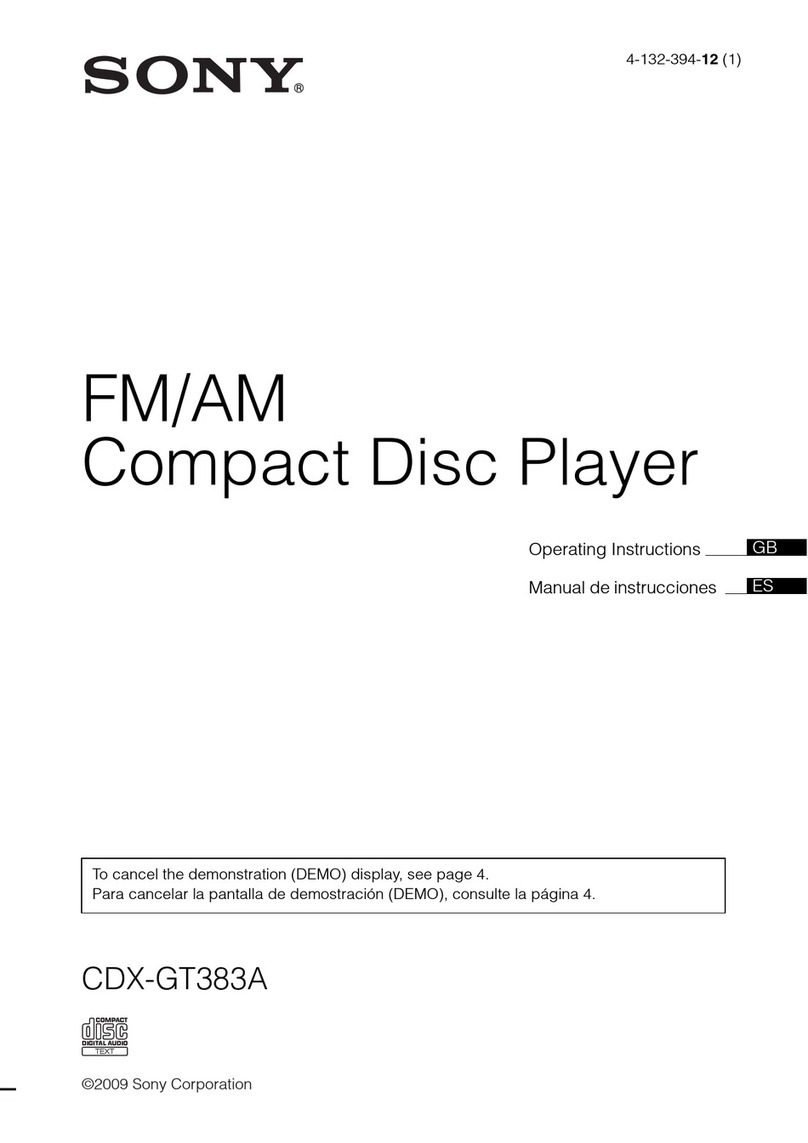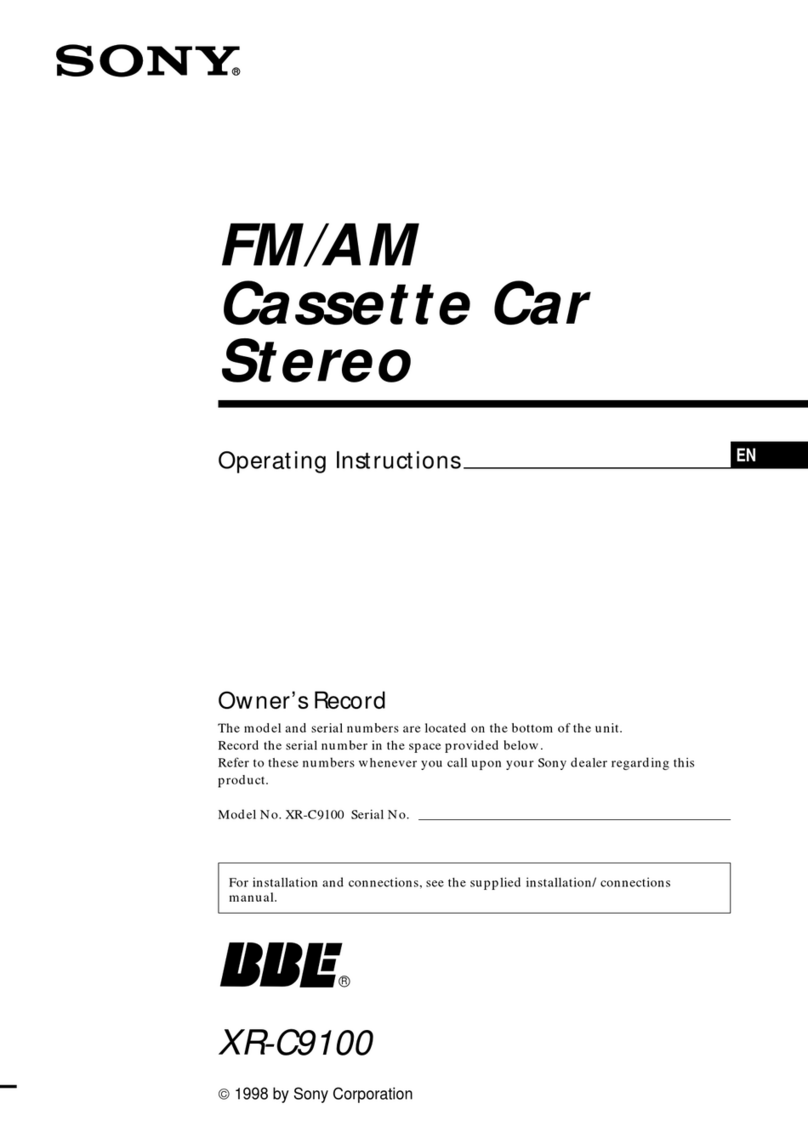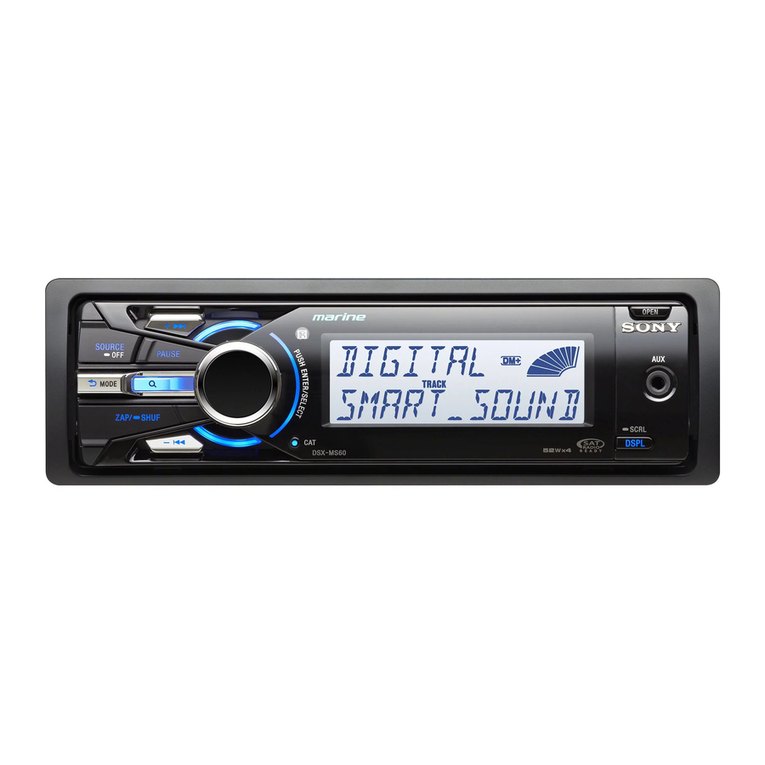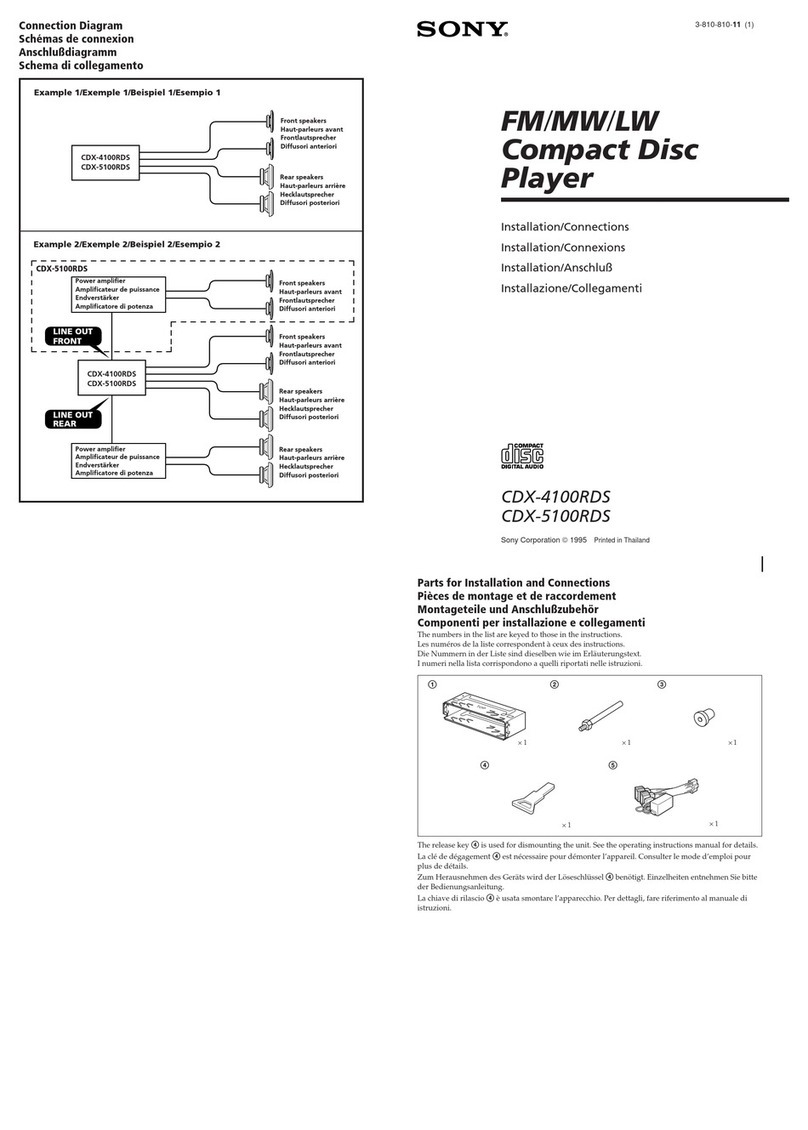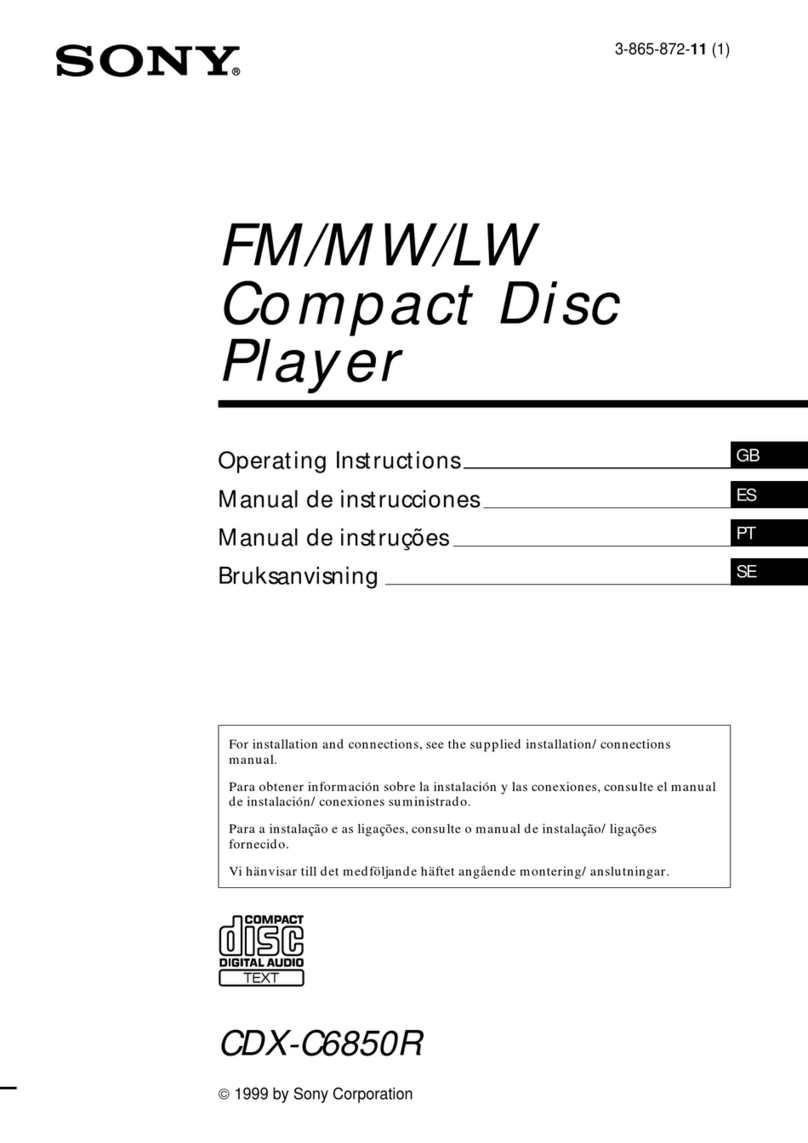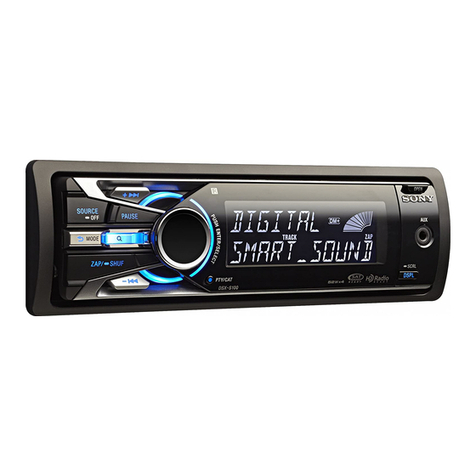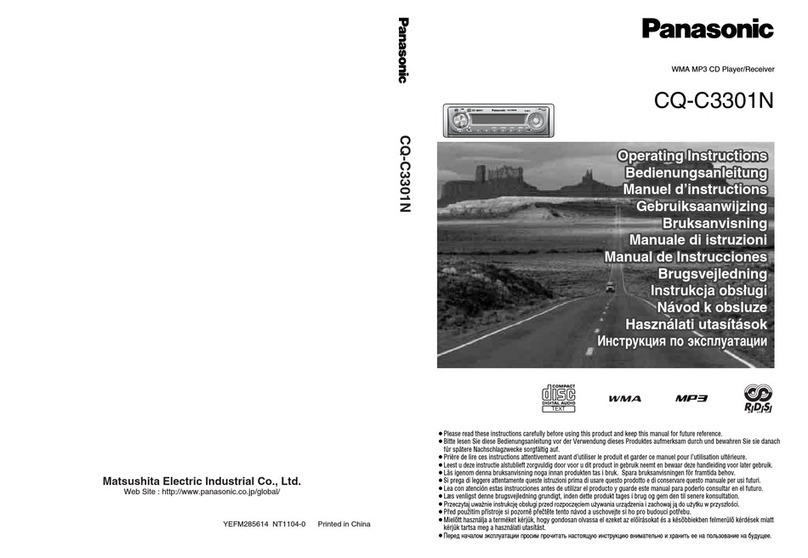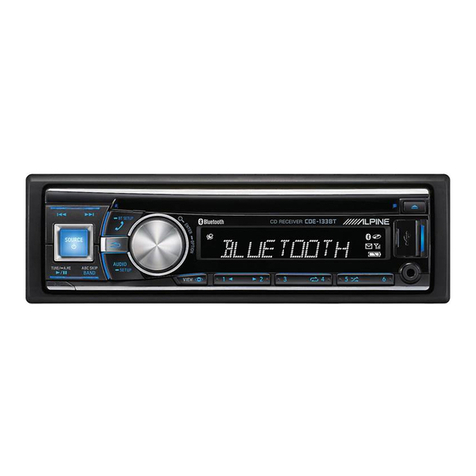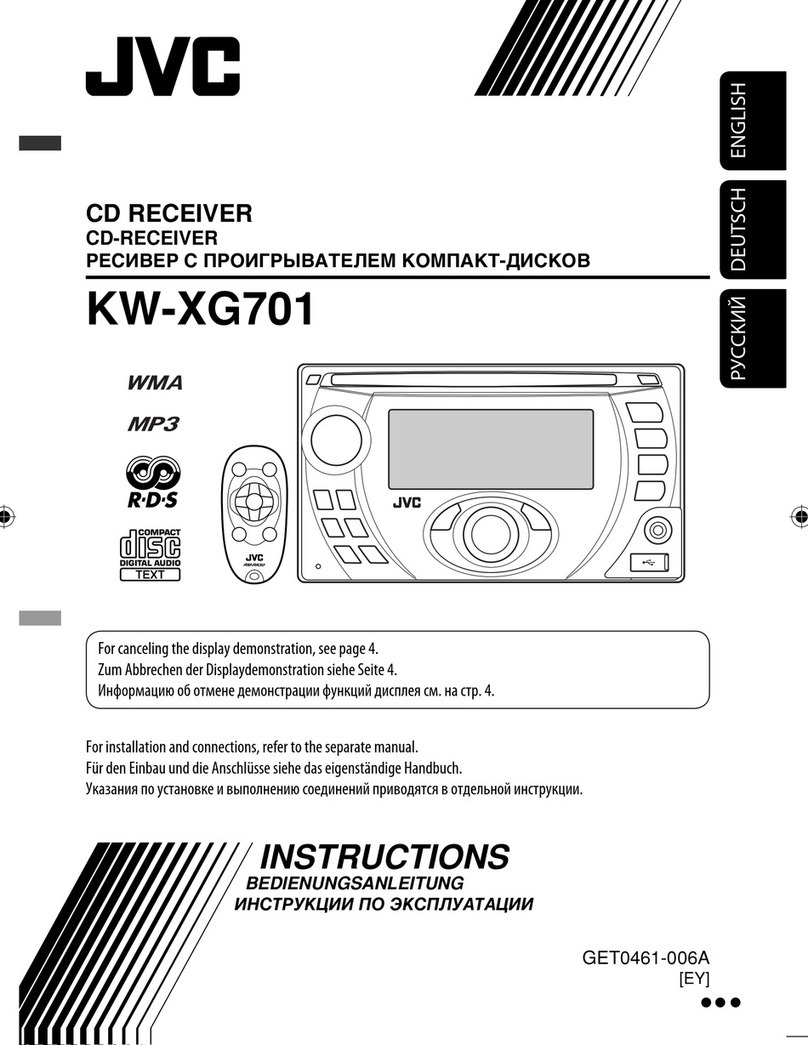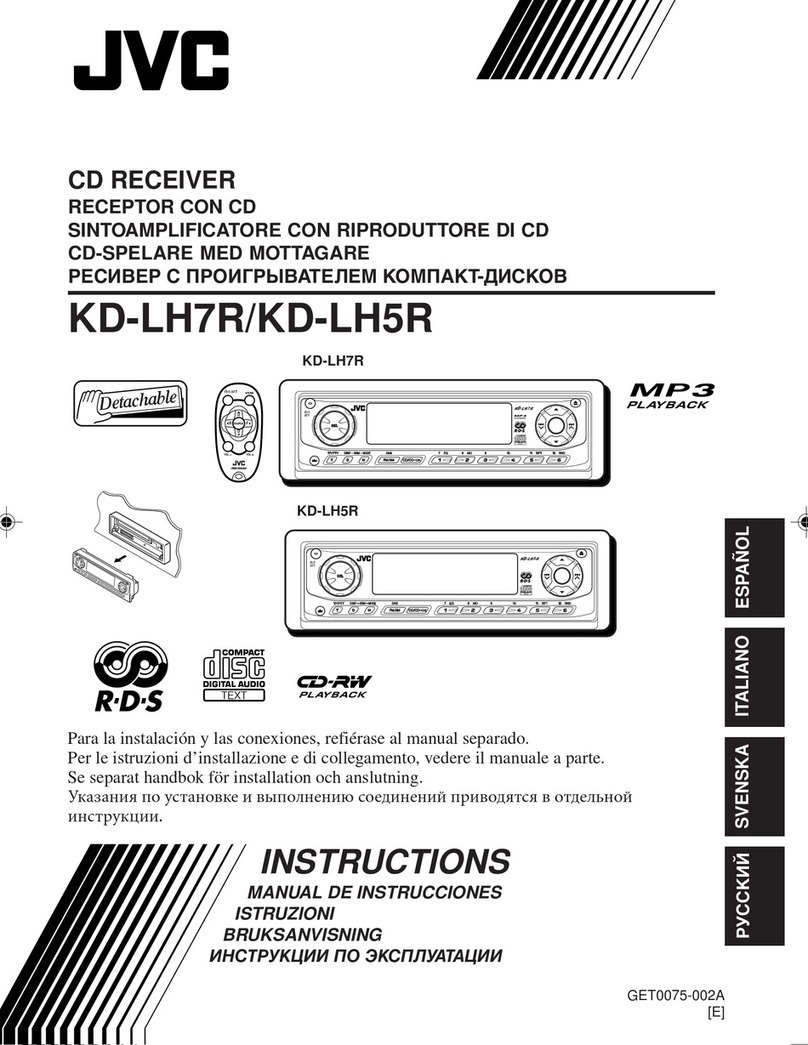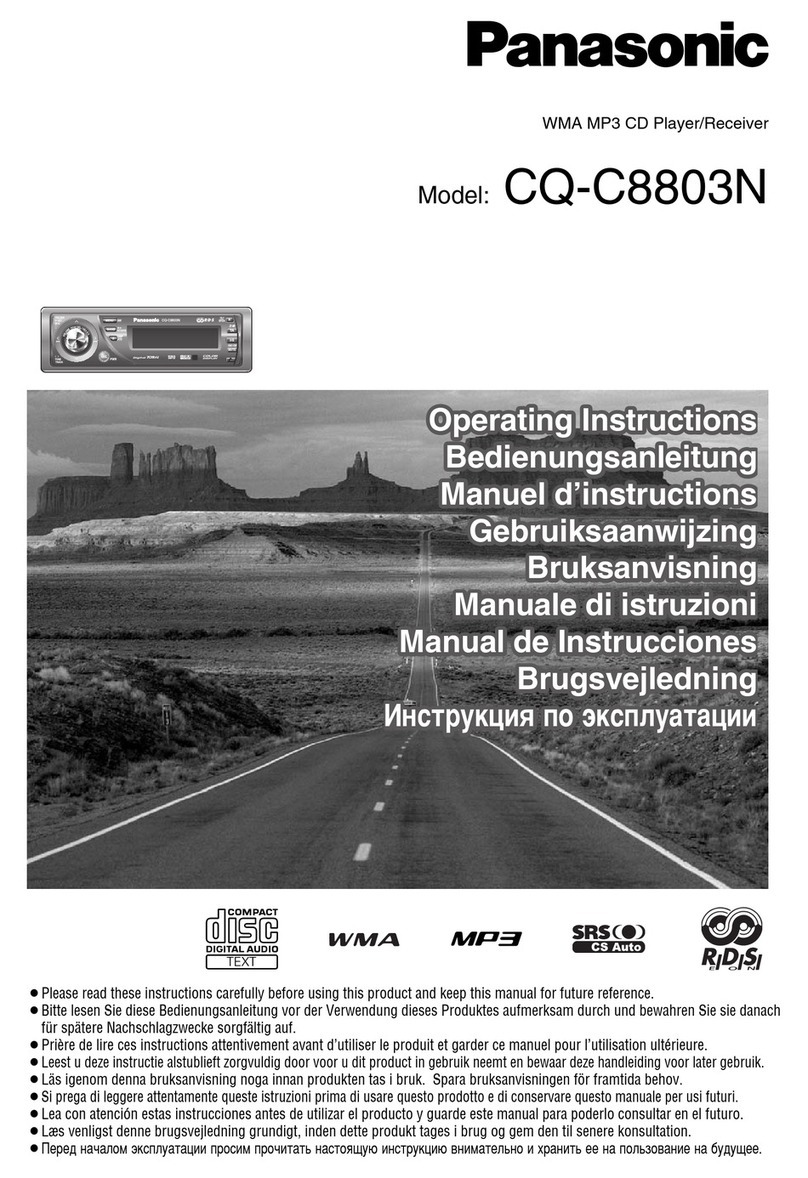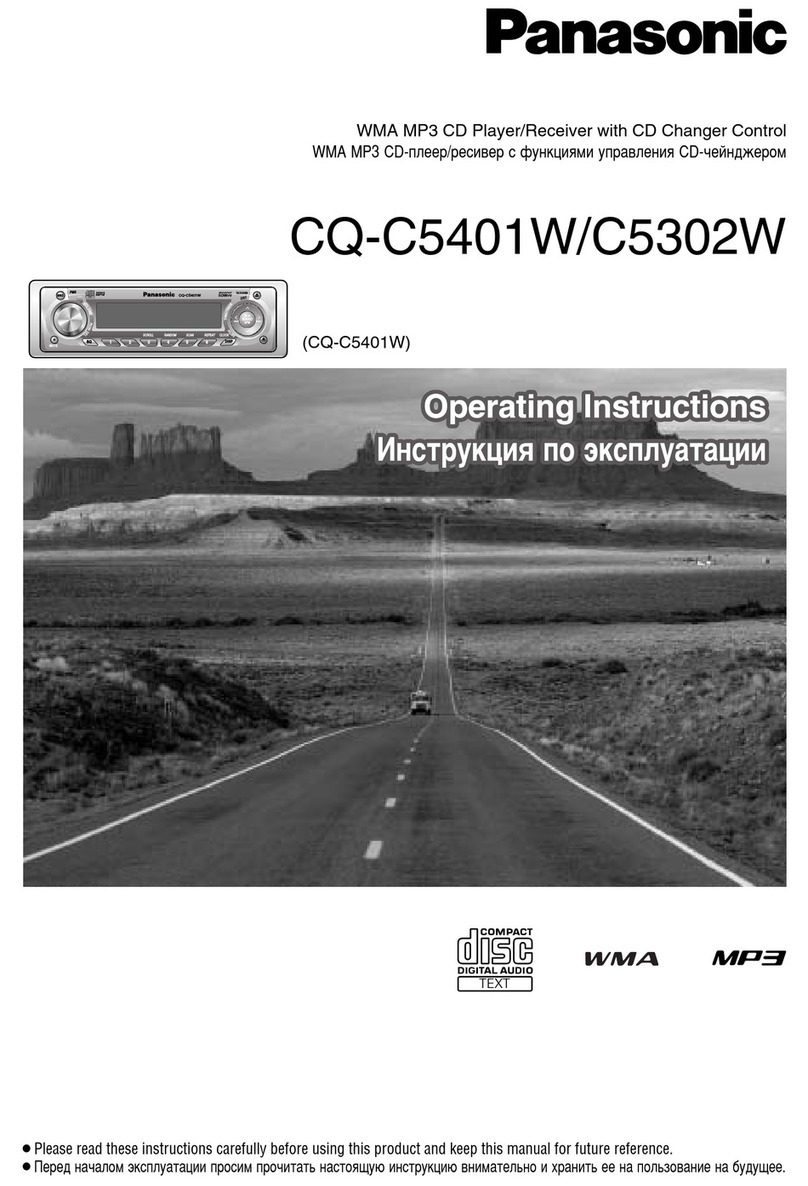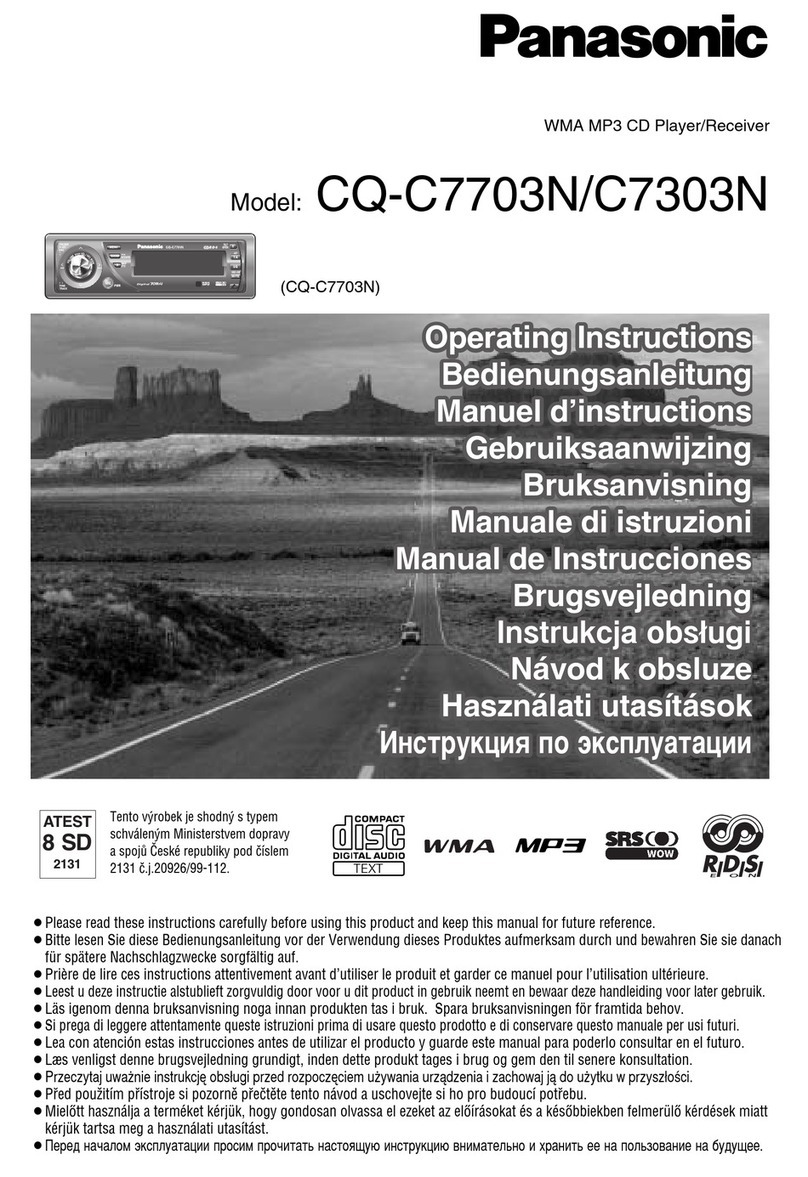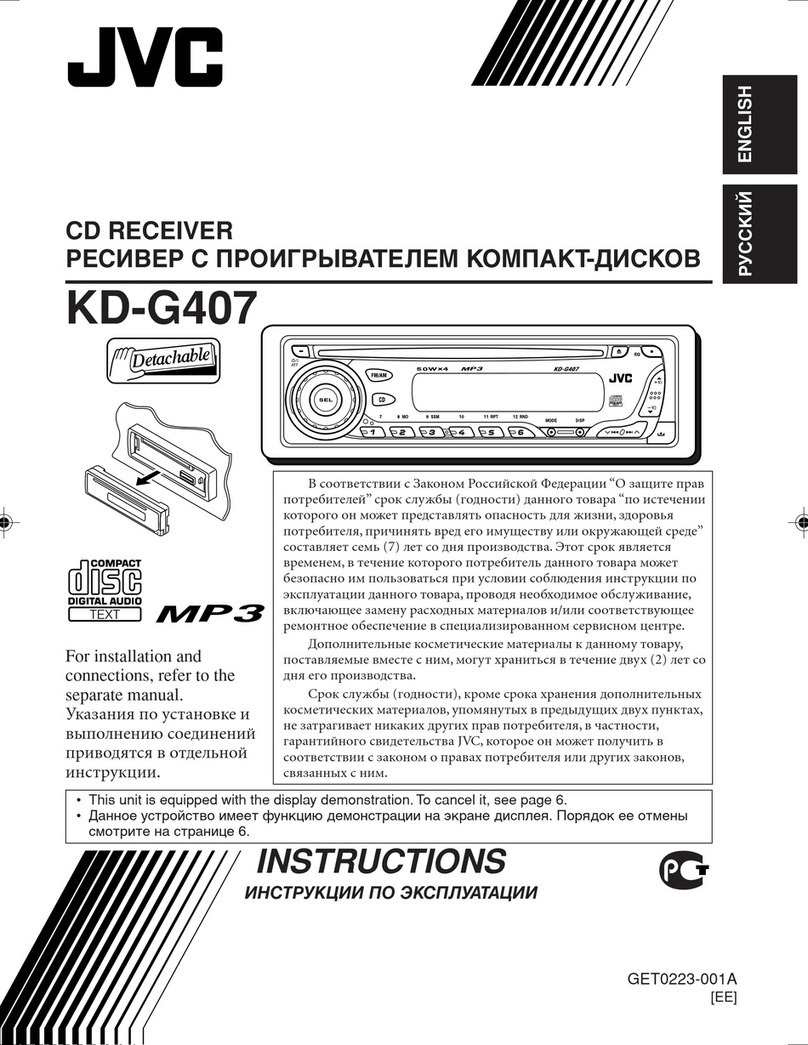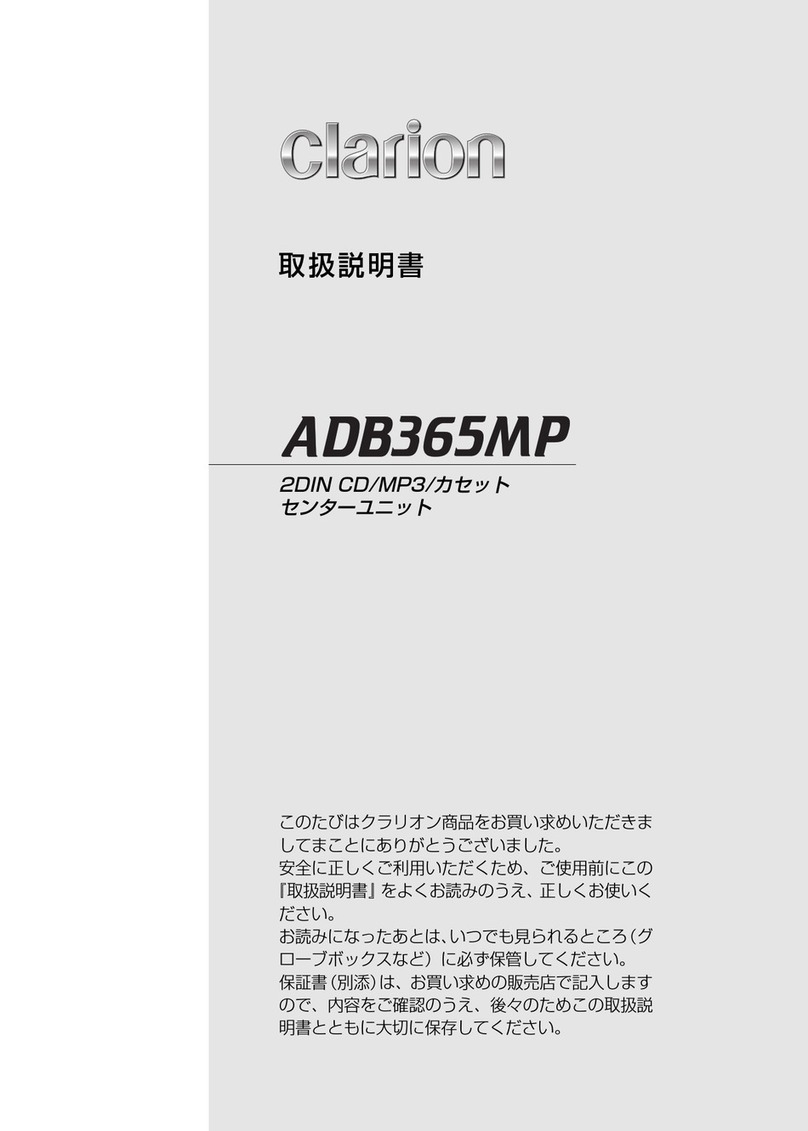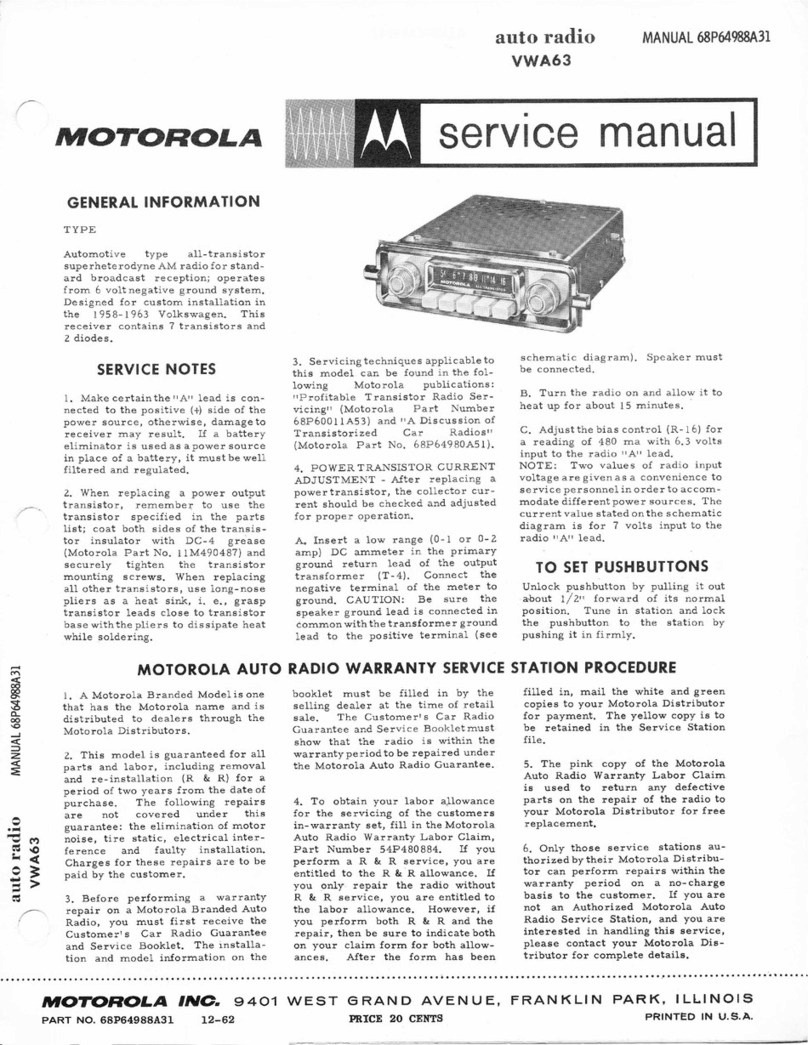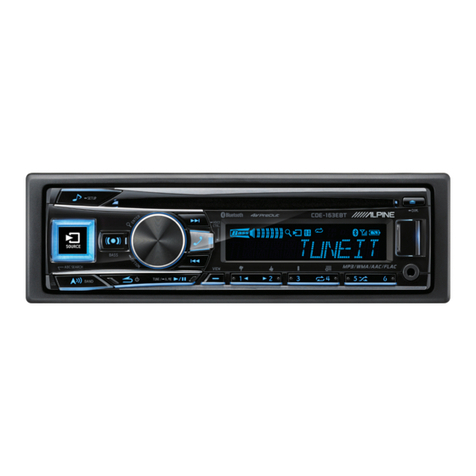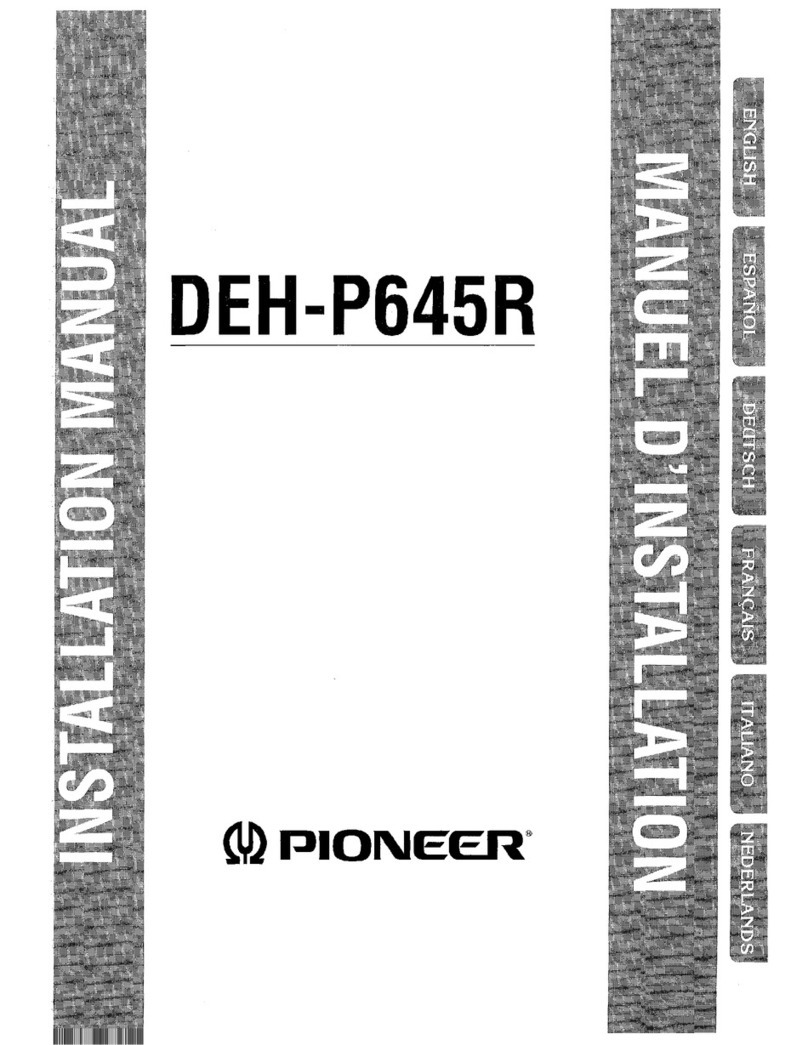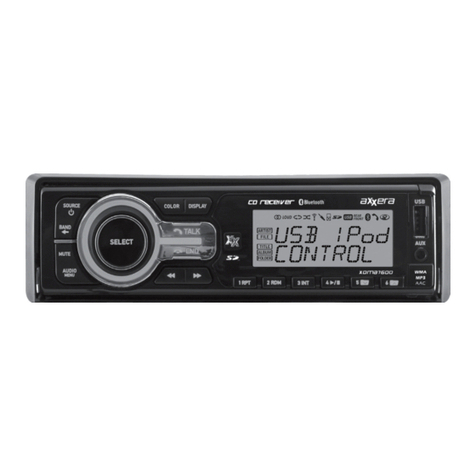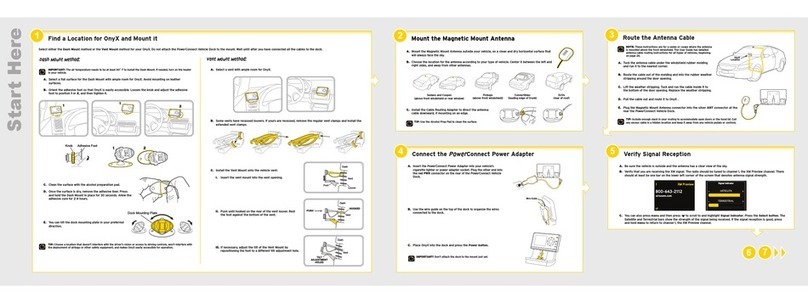– 2 –
TABLE OF CONTENTS
1. GENERAL
Location of Controls ....................................................... 3
Resetting the Unit ........................................................... 4
Detaching the Front Panel............................................... 4
Setting the Clock ............................................................. 4
Dismounting the Unit...................................................... 4
Installation....................................................................... 5
Connection ...................................................................... 6
2. DISASSEMBLY ......................................................... 8
3. ASSEMBLY OF MECHANISM DECK........... 10
4. MECHANICAL ADJUSTMENTS....................... 13
5. ELECTRICAL ADJUSTMENTS
Test Mode ........................................................................ 13
Tape Deck Section .......................................................... 13
Tuner Section .................................................................. 14
6. DIAGRAMS
6-1. IC Pin Function Description ........................................... 17
6-2. Note for Printed Wiring Boards and
Schematic Diagrams ....................................................... 20
6-3. Printed Wiring Board – MAIN Section – ...................... 21
6-4. Schematic Diagram – MAIN Section (1/2) –................. 23
6-5. Schematic Diagram – MAIN Section (2/2) –................. 25
6-6. Printed Wiring Board – PANEL Section – .................... 27
6-7. Schematic Diagram – PANEL Section – ....................... 29
7. EXPLODED VIEWS................................................ 33
8. ELECTRICAL PARTS LIST ............................... 36
Flexible Circuit Board Repairing
• Keep the temperature of the soldering iron around 270 ˚C dur-
ing repairing.
• Do not touch the soldering iron on the same conductor of the
circuit board (within 3 times).
• Be careful not to apply force on the conductor when soldering
or unsoldering.
Notes on chip component replacement
• Never reuse a disconnected chip component.
• Notice that the minus side of a tantalum capacitor may be dam-
aged by heat.
